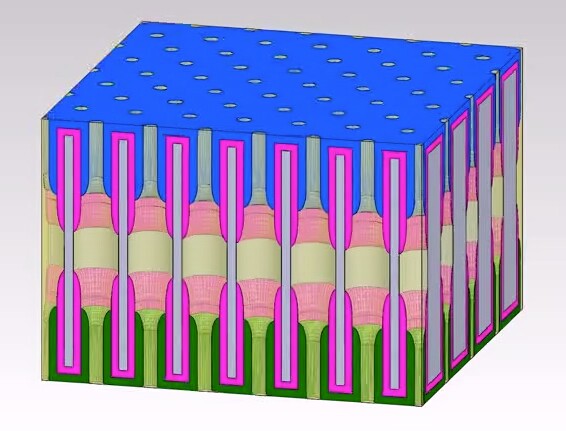As electronic devices continue to get smaller, one question becomes increasingly pertinent – how will we power them? Well, smaller batteries would seem to be the most obvious answer. With that in mind, researchers at the University of Maryland have succeeded in creating a tiny battery that incorporates even smaller structures, known as nanopores.
The battery is made from a postage stamp-sized sheet of ceramic material, with an array of millions of microscopic holes going through it – these are the nanopores, and they're each about one eighty-thousandth the width of a human hair.
Each one contains an electrolyte solution and has a nanotube electrode at either end, those electrodes serving as an anode and cathode. This setup allows each of the nanopores to act as a sort of minuscule sub-battery – all of which are connected in parallel – storing and discharging energy together.

According to the university, the prototype battery can be fully charged in 10 minutes, and recharged thousands of times.
While the current version is intended mostly as a proof-of-concept model, the scientists have determined improvements that could be made to the second version, allowing it to have 10 times the energy density. They're also looking at methods of industrial-scale production, so that the batteries could ultimately be produced commercially.
A paper on the research recently appeared in the journal Nature Nanotechnology.
Source: University of Maryland





